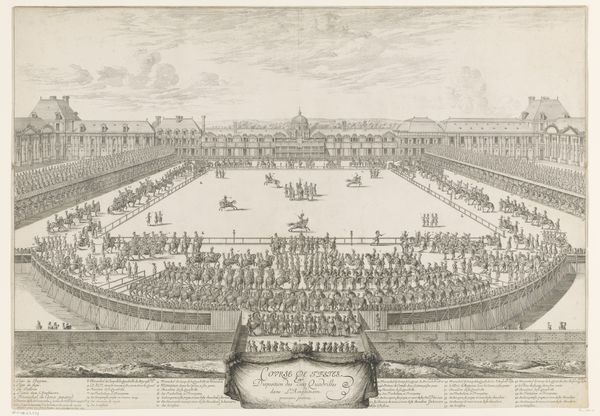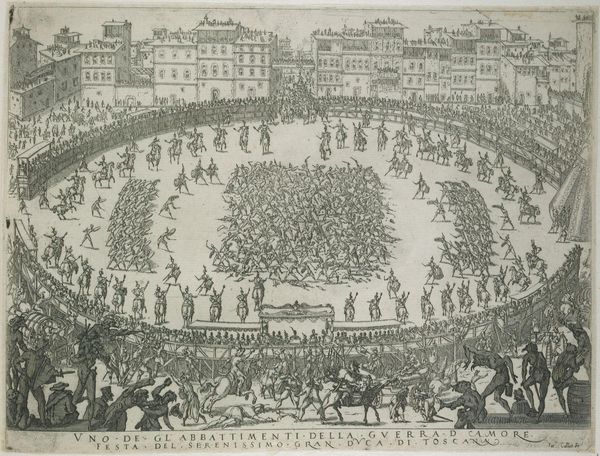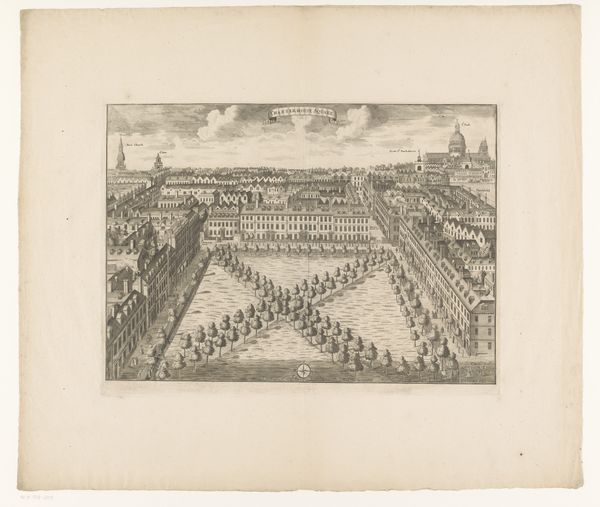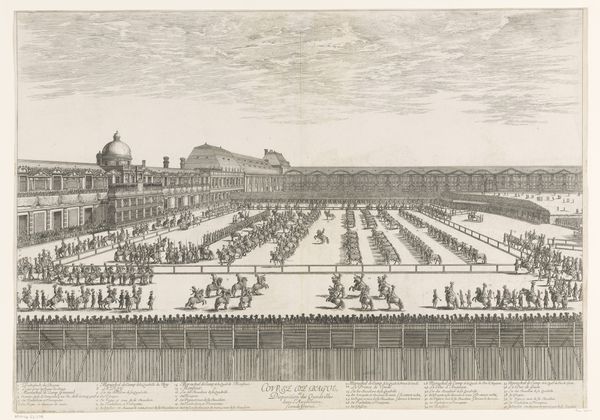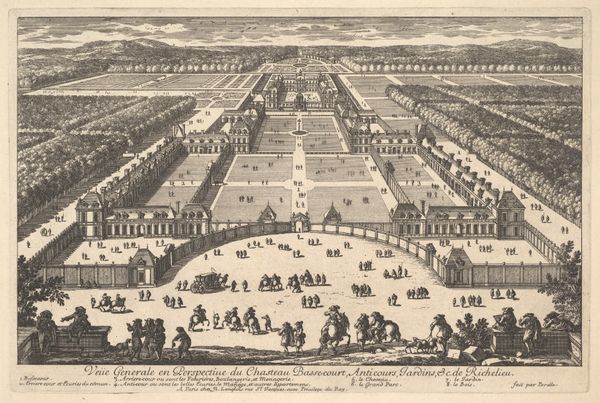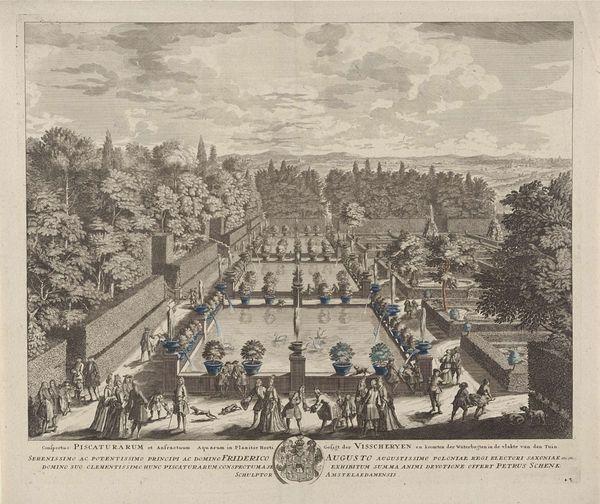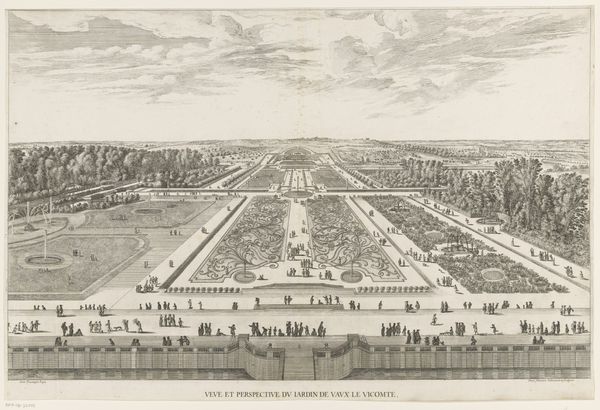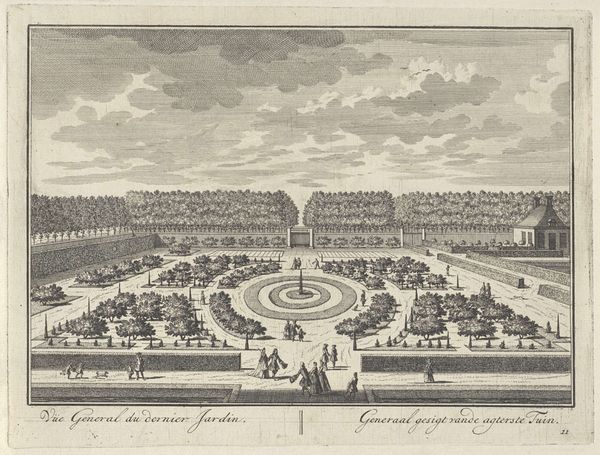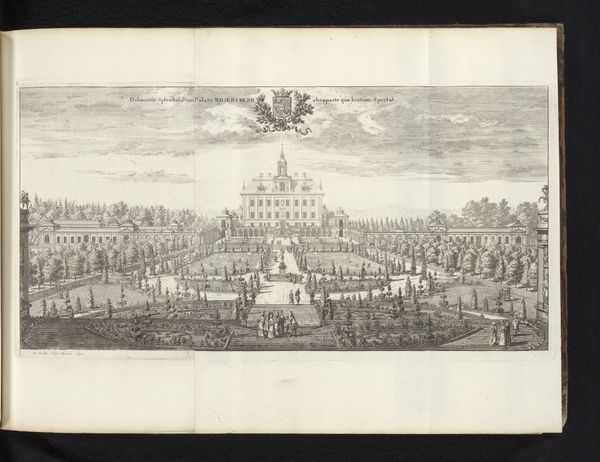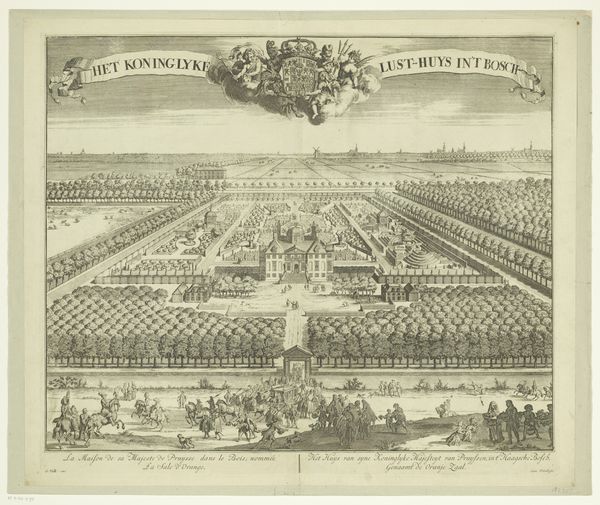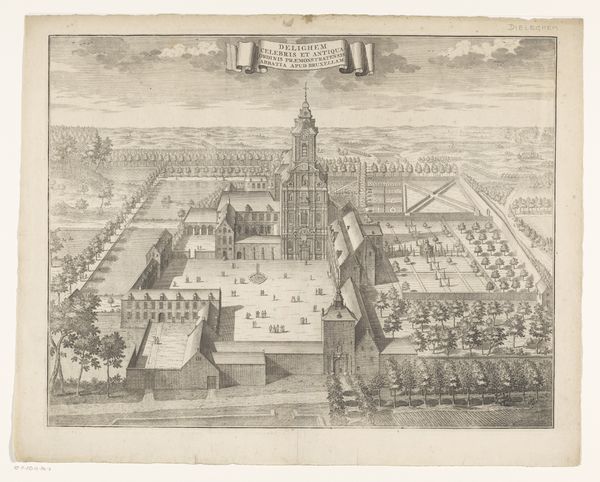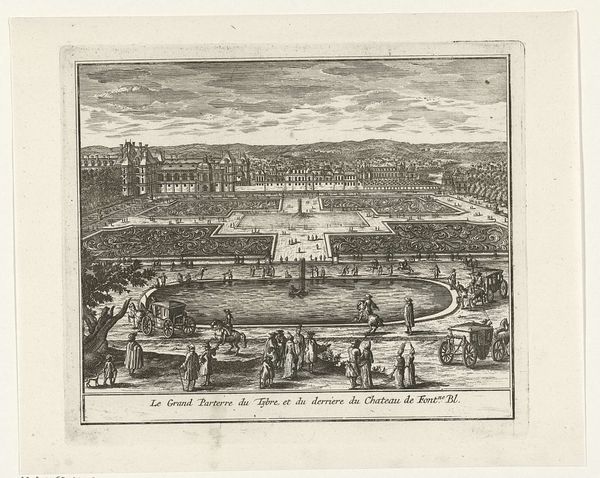
print, etching
#
baroque
# print
#
etching
#
geometric
#
cityscape
#
history-painting
Dimensions: height 534 mm, width 771 mm
Copyright: Rijks Museum: Open Domain
Editor: Here we have "Military Parade with Louis XIV in Amphitheater" by Israel Silvestre, created around 1662. It's a print, an etching actually, housed at the Rijksmuseum. The composition is really striking, almost obsessively geometric. How would you interpret the visual impact of this piece? Curator: Indeed. Look at the sheer volume of figures, regimented, controlled, presented in such a way that all eyes lead back to the architectural landscape on the horizon. What story is this theatrical arrangement telling us? Notice the repeated patterns—the lines of soldiers, the curves of the parade ground. Consider them symbols of order, discipline, and, ultimately, the king’s control. This resonates with the baroque period and with Louis XIV’s personal aspirations. Editor: So, you see those patterns as symbols? How does that play out with the architecture in the background? Curator: Precisely! The architecture, too, speaks of power. Buildings were visual statements. But remember the fleeting nature of the print medium in this context. How does that tension play into the broader psychological portrait of the Sun King, whose image required continuous renewal and reinvigoration, and who likely wanted this military might memorialized? It’s like a visual mantra meant to perpetuate an idealized memory. Editor: I never thought of prints as propaganda, in a way. Curator: They absolutely were. This image is more than just a record; it's a carefully constructed narrative. The symbols aren't accidental. They were intentional choices, carefully calibrated to reinforce a particular vision of kingship and social order. What feeling does that elicit in you, looking at it now? Editor: Thinking of it that way, it feels less like a depiction of an event and more like a statement. The precision and control, reflected both in the depicted scene and in the artistic rendering of it, speak volumes about Louis XIV's ambitions. Curator: Exactly. Now you’re reading the symbolic language of the piece. It goes beyond simple historical record-keeping; it communicates a calculated message about authority, stability, and the enduring power of the monarchy, as Louis wanted it to be seen. It's quite enlightening.
Comments
No comments
Be the first to comment and join the conversation on the ultimate creative platform.
